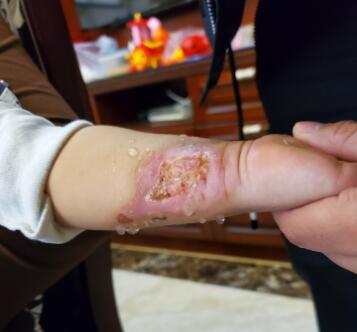
What should I do if my baby has burns and scars?
What should I do if my baby is scalded and hypertrophic? The naughty child may be burned accidentally. If the wound is left untreated, the scar will be very serious. Therefore, the treatment of hyperplastic scar is very important. Before treating hypertrophic scars, it is necessary to know the degree of scald in the child. Let's take a closer look at scald hyperplasia and how to treat scald scar growth?
What to do if the baby has burns and scars:
To treat scalded hypertrophic scars, you must first know how many grades your child has:
I degree scald hypertrophic scar treatment: refers to the damage to the surface layer of the skin. The injured skin was red and swollen with pain and burning sensation. Rinse with cold water or soak in tap water at the time of the injury or apply a gauze wet. This type of scalded hypertrophic scar treatment is generally self-healing.
Second degree scald scar in children: refers to deep skin damage and dermis. Ⅱ degree scald is divided into ① shallow Ⅱ degree refers to the skin damage only to the superficial layer of the dermis, blisters appear, and the blisters are full and painful. If there is no secondary bacterial infection, the wound can heal in 2 weeks, leaving no scald scar after healing.
Ⅲ Degree Pediatric Scars: In addition to pediatric and dermal scalds, subcutaneous fat, muscles and bones can be damaged. The skin can be scorched, and it feels lost without pain. After healing, not only does it lose skin function (such as closed sweat), but the wound is difficult to heal. Even if the wound is healed, there is contracture deformity in the wound. Pediatric scalds sometimes require skin grafts for treatment of hypertrophic scars.
Treatment of scalded hypertrophic scars is to pay attention if the area of scald scars in children is large. There are also systemic symptoms. On the one hand, shock can be caused by severe pain; on the other hand, a large amount of fluid (plasma) exudates, which can reduce blood volume and appear dangerous symptoms such as decreased blood pressure. Therefore, pediatric scalded hypertrophic scars should be treated in regular hospitals and treated in time to prevent scalds from proliferating and make treatment more difficult.
In general, the above introduces you to the problem of scalded hypertrophic scar treatment. I believe you already have a certain understanding of scalded hypertrophic scar treatment. In addition, after you understand these scald hypertrophic scar treatment methods, you must go to a regular hospital for an examination first, so that you can safely do scald hypertrophic scar treatment.



